Nadine Balbeisi, Cantar Alla Viola - Jacob Kremberg: Musicalische Gemüths-Ergötzung, oder Arien, Dresden, 1689 (2025)
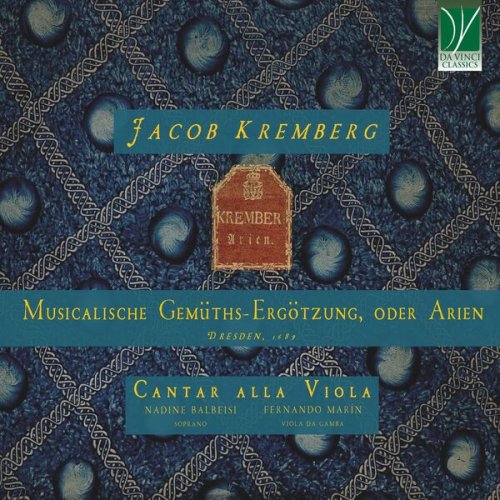
Artist: Nadine Balbeisi, Cantar Alla Viola
Title: Jacob Kremberg: Musicalische Gemüths-Ergötzung, oder Arien, Dresden, 1689
Year Of Release: 2025
Label: Da Vinci Classics
Genre: Classical
Quality: flac lossless (tracks)
Total Time: 03:38:41
Total Size: 1.05 gb
WebSite: Album Preview
TracklistTitle: Jacob Kremberg: Musicalische Gemüths-Ergötzung, oder Arien, Dresden, 1689
Year Of Release: 2025
Label: Da Vinci Classics
Genre: Classical
Quality: flac lossless (tracks)
Total Time: 03:38:41
Total Size: 1.05 gb
WebSite: Album Preview
CD1
01. Musicalische Gemüths-Ergötzung: Aria 1. Mein erzuernetes Geschicke
02. Musicalische Gemüths-Ergötzung: Aria 2. Was fuer Danck kan ich dir sagen
03. Musicalische Gemüths-Ergötzung: Aria 3. Mein treues Blut bleibt allzeit gut
04. Musicalische Gemüths-Ergötzung: Aria 4. Mein perlen Kind / mein Blutrubinen Licht
05. Musicalische Gemüths-Ergötzung: Aria 5. Ich sehne mich zu sterben
06. Musicalische Gemüths-Ergötzung: Aria 6. GOTT der du gut und freundlich bist
07. Musicalische Gemüths-Ergötzung: Aria 7. Fließet haeuffig ô ihr traehnen
08. Musicalische Gemüths-Ergötzung: Aria 8. Halt ein betruebe dich nicht mehr
09. Musicalische Gemüths-Ergötzung: Aria 9. Wer nur auf GOTT sezt sein vertrauen
10. Musicalische Gemüths-Ergötzung: Aria 10. Ich bin bestaendig allezeit
11. Musicalische Gemüths-Ergötzung: Aria 11. Ich traue nicht den falschen Gluecke
12. Musicalische Gemüths-Ergötzung: Aria 12. Stuermt ihr tollen ungluecks Winde
13. Musicalische Gemüths-Ergötzung: Aria 13. O Demant fester Schluß ô Pein
14. Musicalische Gemüths-Ergötzung: Aria 14. Entferne dich du eitles Wesen
15. Musicalische Gemüths-Ergötzung: Aria 15. Wunderbahre Seltzamkeiten
16. Musicalische Gemüths-Ergötzung: Aria 16. Bleib getreu und wancke nicht
17. Musicalische Gemüths-Ergötzung: Aria 17. Mein Augenpaar sind thraenen Qvellen
18. Musicalische Gemüths-Ergötzung: Aria 18. Ich kan nichts von Freude sagen
19. Musicalische Gemüths-Ergötzung: Aria 19. Christallinen WunderSchein
20. Musicalische Gemüths-Ergötzung: Aria 20. Geht ihr matten Seuffzer gehet
CD2
01. Musicalische Gemüths-Ergötzung: Aria 21. Ich bin in meinen Hertzen mit Freuden
02. Musicalische Gemüths-Ergötzung: Aria 22. Gruehnet die Hoffnung halb hab ich gewonnen
03. Musicalische Gemüths-Ergötzung: Aria 23. Gleich und gleich steht wohl beisammen
04. Musicalische Gemüths-Ergötzung: Aria 24. Cloris deiner Schoenheit Pracht
05. Musicalische Gemüths-Ergötzung: Aria 25. Wenn werd ich doch durch Gegengunst ergoezt
06. Musicalische Gemüths-Ergötzung: Aria 26. Ach ich lieb und muß verschweigen
07. Musicalische Gemüths-Ergötzung: Aria 27. Gebet Rath getreue Sinnen
08. Musicalische Gemüths-Ergötzung: Aria 28. Stuermt ihr Gedancken auf mein Leben
09. Musicalische Gemüths-Ergötzung: Aria 29. Das Glueck betruegt gar sehr in lieben
10. Musicalische Gemüths-Ergötzung: Aria 30. Lieben foltert nur die Seelen
11. Musicalische Gemüths-Ergötzung: Aria 31. Wie ist die hoffnung doch ein solch Vergnuegen
12. Musicalische Gemüths-Ergötzung: Aria 32. Ich hab die Augen zwar geweidet
13. Musicalische Gemüths-Ergötzung: Aria 33. Ich bin verliebt in einen Traum
14. Musicalische Gemüths-Ergötzung: Aria 34. Wer auf Wortte trauet / und auf Schoenheit bauet
15. Musicalische Gemüths-Ergötzung: Aria 35. Mein Gemueth wilstu erschrecken
16. Musicalische Gemüths-Ergötzung: Aria 36. Wie so veraenderlich mein Engel stellstu dich
17. Musicalische Gemüths-Ergötzung: Aria 37. Verkehrtes Glueck soll denn mein hoffen liegen
18. Musicalische Gemüths-Ergötzung: Aria 38. O mein Gluecke und Geschicke
19. Musicalische Gemüths-Ergötzung: Aria 39. Ein lustiges Leben ist beßer als Gold
20. Musicalische Gemüths-Ergötzung: Aria 40. Ich fuerchte GOTT und mein Gewißen
CD3
01. Musicalische Gemüths-Ergötzung: Aria 1. Mein erzuernetes Geschicke
02. Musicalische Gemüths-Ergötzung: Aria 2. Was fuer Danck kan ich dir sagen
03. Musicalische Gemüths-Ergötzung: Aria 3. Mein treues Blut bleibt allzeit gut
04. Musicalische Gemüths-Ergötzung: Aria 4. Mein perlen Kind / mein Blutrubinen Licht
05. Musicalische Gemüths-Ergötzung: Aria 5. Ich sehne mich zu sterben
06. Musicalische Gemüths-Ergötzung: Aria 6. GOTT der du gut und freundlich bist
07. Musicalische Gemüths-Ergötzung: Aria 7. Fließet haeuffig ô ihr traehnen
08. Musicalische Gemüths-Ergötzung: Aria 8. Halt ein betruebe dich nicht mehr
09. Musicalische Gemüths-Ergötzung: Aria 9. Wer nur auf GOTT sezt sein vertrauen
10. Musicalische Gemüths-Ergötzung: Aria 10. Ich bin bestaendig allezeit
11. Musicalische Gemüths-Ergötzung: Aria 11. Ich traue nicht den falschen Gluecke
12. Musicalische Gemüths-Ergötzung: Aria 12. Stuermt ihr tollen ungluecks Winde (2)
13. Musicalische Gemüths-Ergötzung: Aria 13. O Demant fester Schluß ô Pein
14. Musicalische Gemüths-Ergötzung: Aria 14. Entferne dich du eitles Wesen
15. Musicalische Gemüths-Ergötzung: Aria 15. Wunderbahre Seltzamkeiten
16. Musicalische Gemüths-Ergötzung: Aria 16. Bleib getreu und wancke nicht
17. Musicalische Gemüths-Ergötzung: Aria 17. Mein Augenpaar sind thraenen Qvellen
18. Musicalische Gemüths-Ergötzung: Aria 18. Ich kan nichts von Freude sagen
19. Musicalische Gemüths-Ergötzung: Aria 19. Christallinen WunderSchein
20. Musicalische Gemüths-Ergötzung: Aria 20. Geht ihr matten Seuffzer gehet
21. Musicalische Gemüths-Ergötzung: Aria 21. Ich bin in meinen Hertzen mit Freuden
22. Musicalische Gemüths-Ergötzung: Aria 22. Gruehnet die Hoffnung halb hab ich gewonnen
23. Musicalische Gemüths-Ergötzung: Aria 23. Gleich und gleich steht wohl beisammen
24. Musicalische Gemüths-Ergötzung: Aria 24. Cloris deiner Schoenheit Pracht
25. Musicalische Gemüths-Ergötzung: Aria 25. Wenn werd ich doch durch Gegengunst ergoezt
26. Musicalische Gemüths-Ergötzung: Aria 26. Ach ich lieb und muß verschweigen
27. Musicalische Gemüths-Ergötzung: Aria 27. Gebet Rath getreue Sinnen
28. Musicalische Gemüths-Ergötzung: Aria 28. Stuermt ihr Gedancken auf mein Leben
29. Musicalische Gemüths-Ergötzung: Aria 29. Das Glueck betruegt gar sehr in lieben
30. Musicalische Gemüths-Ergötzung: Aria 30. Lieben foltert nur die Seelen
31. Musicalische Gemüths-Ergötzung: Aria 31. Wie ist die hoffnung doch ein solch Vergnuegen
32. Musicalische Gemüths-Ergötzung: Aria 32. Ich hab die Augen zwar geweidet
33. Musicalische Gemüths-Ergötzung: Aria 33. Ich bin verliebt in einen Traum
34. Musicalische Gemüths-Ergötzung: Aria 34. Wer auf Wortte trauet / und auf Schoenheit bauet
35. Musicalische Gemüths-Ergötzung: Aria 35. Mein Gemueth wilstu erschrecken
36. Musicalische Gemüths-Ergötzung: Aria 36. Wie so veraenderlich mein Engel stellstu dich
37. Musicalische Gemüths-Ergötzung: Aria 37. Verkehrtes Glueck soll denn mein hoffen liegen
38. Musicalische Gemüths-Ergötzung: Aria 38. O mein Gluecke und Geschicke
39. Musicalische Gemüths-Ergötzung: Aria 39. Ein lustiges Leben ist beßer als Gold
40. Musicalische Gemüths-Ergötzung: Aria 40. Ich fuerchte GOTT und mein Gewißen
With the inspiring title of “Musical Soul’s Delight”, the discovery of this impressive book of 40 Arias by Jacob Kremberg, published in Dresden 1689 by publisher Mathesius, felt much like stumbling on a treasure trove. The book’s title indicates the accompaniments “which are thus arranged so that they can be sung with one voice alone, next to the general bass, or at the same time and especially on the lute, angelique, viola di gamba, and guitar.” The viola da gamba part, written in tablature, has proven to be a unique and invaluable musical example of the cantare alla viola practice in Germany. These rich accompaniments double the voice’s melody over a supportive bass fundament while including the full harmony in between, sometimes with passages of double stops carrying two voices in parallel motion. Solo instrumental versions of the arias are therefore reasonable as a performance possibility since they are able to sing on their own. Considering it has never been recorded in its entirety, we decided a few years ago to commit to the arduous task of recording the complete book of arias choosing the version for the cantar alla viola duo with voice and viola da gamba, as well as the instrumental solo version of the viola da gamba.
ABOUT THE COMPOSER AND WORK
BOOK OF ARIAS
Jacob Kremberg was born around 1650 in Warsaw, Poland. He held several different positions at the University of Leipzig, in Magdeburg, and even in the King’s Chapel of Stockholm before singing as an alto at the electoral court in Dresden from 1682 to 1691. It was during this period of his life that this book, the objective of this recording, was published. The full title offers significant information on what we can expect from his outstanding work.
Musicalische Gemüths-Ergötzung, oder Arien, samt deren unterlegten hochdeutschen Gedichten, theils hoher Standes-Personen und vortrefflicher Leute, theils eigener Erfindung. Welche also eingerichtet, daß Sie mit einer Stimme allein zu singen benebenst dem General-Bass, oder aber zugleich und besonders auf der Lauthe, Angelique, Viola di Gamba, und Chitarra, können gespielt werden. Alles nach der neuesten Italienisch und Frantzösischen Manier mit großer Müh und Fleiss verfertigt, und nach eines ieden Instruments Natur und Eigenschafft gantz beqvehm in die Hand gesetzt, Dresden, 1689.
– Musical delight for the soul, or arias, together with their underlying High German poems, some by persons of high rank and distinguished people, some of my own, some of my own invention. These are arranged in such a way that they can be sung with one voice alone, in addition to the basso continuo, or can be played simultaneously and especially on the lute, angelique, viola di gamba, and guitar. All made with great effort and diligence according to the latest Italian and French manner, and set in the hand entirely according to the nature and characteristics of each instrument, Dresden, 1689. –
The book contains 40 arias (38 for solo voice and 2 duets) each fitting neatly into one single page in the format of size 34 x 41 cm. All arias are written for Cantus (soprano) except for aria nos. 22 and 33, both written for Altus. In this recording we have chosen to interpret aria no. 22 as notated in the score and aria no. 33 with the voice singing an octave higher. The two duets (arias 6 and 23) are composed for two soprano voices. This is a musical collection of different moods or humors, similar to early songbooks as Tobias Hume’s Musicall Humors, which displays French, German or Italian styles, as was the fashion in cities and courts at the time.
All of the arias are written in strophic form using German poems, ranging from a minimum of three to as many as ten verses, whose authorship is given only to 15 poems written by Kremberg himself (this is the case in arias nos. 1, 3, 7, 8, 10, 13, 16, 17, 19, 22, 23, 33, 36, 38, 39). We know that Kremberg later wrote opera libretti during his two-year directorship of the Opera of Hamburg at the Gänsemarkt so it is not surprising that he would choose to set his own poems. Mixing sacred and secular texts, the book offers lyrics with themes of love, fortune, devotion, hope and despair emphasizing the opposing motifs of carpe diem (seize the day) and vanitas mundi (vanity of the world), which was typical for German Baroque lyrics of the time. The notion of finding delight in the pleasures of the world is starkly contrasted with reminders of transience, instability, and inevitable mortality with a tendency to blend several themes and moralities seamlessly in one and the same poem. The love poems can be roughly divided into the two groups of reciprocated or hopeful love (arias nos. 19, 21, 23, 24, 29, 32, 36, 37) and unrequited love (arias nos. 1, 13, 16, 20, 25, 26, 28, 30, 33, 35, 38), with one example of the poet questioning whether he should even bother to love as in aria no. 27. The aria nos. 14, 34, 39, and 40 all deal with the theme of the passing of time, even mentioning the falls of Egypt, Rome and Babel as a warning in aria no. 14. The aria nos. 2, 3, 6, 9, 10, 11, 22, 31 highlight the importance of faith, a good life, and the delightfully hopeful moments after storms, torments and despair. Despair and faith have more weight in some arias (as in aria nos. 7, 15, 17, 18), with highly descriptive reminders of the suffering of Jesus in aria no. 4, painting scenes of blood trickling from his veins, and in aria no. 8, where the bearing of one’s own cross is for the higher good. The aria nos. 5 and 12 display the ultimate longing for death and salvation.
HISTORICAL CONTEXT
At the end of the 16th century, string instruments such as the lira, viola da gamba and lira d’arco offered a rich repertoire often using scordatura1 for solo instruments or in combination with other instruments and for polyphonic or chordal accompaniment of singers. This repertoire extended from standard polyphonic vocal works into the early 17th century, where a virtuoso singing voice was accompanied by continuo chordal harmonies. During the period when the viola da gamba (especially in England, northern Alps and Germany) was tuned in different ways to achieve different colors, timbres and sonorities, a type of viola emerged specifically designed for this purpose called the lyra-viol. This practice, which can already be found in the viola bastarda described by Michael Praetorius, comes from the vocal accompaniment technique of the lyra da braccio of the Renaissance. Up to 52 different scordatura tunings have been documented for the viol, according to Annette Otterstedt (Die Englische Lyra-Viol, 1989). Despite so many tunings, some of those offered by Jacob Kremberg in his book are not included in this list of those known at the time, leaving us to think that many were lost and only the most used or successful ones were mentioned. Thomas Mace (Musiks Monument, 1676) states that no better tunings could be invented for both the lute and the viola da gamba than those known at the time, corroborating the great experimentation that performers carried out in this field.
ABOUT CANTARE ALLA VIOLA PRACTICE AND CONNECTION TO KREMBERG
Dating back to the Middle Ages, we find a practice of singing to a bowed viola, very popular from the Renaissance to the early Baroque period called Cantare alla viola. There are hardly any documented arrangements of this practice, as the player usually notated and created his own. Even more uncommon are examples with scordatura tunings, an English practice that had become less in use from the Baroque period onwards. This was one of the most esteemed practices of the Renaissance, consisting of accompanying the voice with a vihuela (viola, plucked or bowed). The singer sang or recited one voice of the madrigal accompanied by the vihuela playing the other voices. This practice of accompanying the voice with a viol was also mentioned by Baldassare Castiglione (Il Cortegiano, Venice, 1528). According to Castiglione, among all the styles of music for a courtier to practice, the best was to sing with a viola (cantare alla viola) because it makes it possible to appreciate “all the sweetness” that is found in the solo voice. Although it was a popular form of accompaniment, there is no written music specifically for it from the 15th and 16th centuries. The treatises Regola Rubertiana (Venice, 1542) and Lettione Seconda (Venice, 1543), by Sylvestro Ganassi, explain in detail how to arrange and perform 3-part vocal works on the viol. Ganassi gives us an example of a 3-part madrigal by Giacomo Fogliano “Io vorrei Dio d’amore” and writes his arrangement for the viola da gamba with a voice part. Ganassi, and probably many other musicians who practiced this, were inspired by such 3-part madrigals. At the beginning of the 17th century there are publications by English composers who wrote out arrangements for the viola da gamba as an accompanying instrument for the voice. From England we have some examples like Robert Jones, The Second Booke of Songs and Ayres (1601), Robert Tailour, Sacred Hymns (1615) and William Corkine, The Second Book of Ayres (1612), while from Germany, perhaps only this one, Jacob Kremberg’s book.
ABOUT THE INTERPRETATION FOR THIS RECORDING
From the explanation in the title of the work that the arias: “arranged in such a way that they can be sung with one voice alone…or can be played simultaneously and especially on the lute, angelique, viola di gamba, and guitar …” we can observe certain customs in the editions of songbooks, especially of English music with lute and viola da gamba accompaniment. The music is presented in a format that, apart from the melodic line of the singer with figured bass accompaniment, included tablatures for the instruments and offered various possibilities of interpretation. These possible versions are clearly explicit, not only in the author’s explanation in the title or prologue, but also in the careful and detailed version of the tablatures that show the exact notes of the harmony, ornaments, and even in some cases, the orientation of the pages for the position of the musicians in performance (Tobias Hume, John Dowland, Alfonso Ferrabosco, and others). This book, just as in the English songbooks and as an expressive alternative of clear inspiration in this musical practice, includes different scordatura or ways of tuning. The different tunings give a different sonority to the instrument due to the colors, harmonies and effects of resonance and tonality emerging from the proportions between the strings. This expansion of expressive resources made it possible to convert a single instrument into up to 12 different variants of the same instrument by virtue of its timbral response, adapting it to the needs of the characteristics of each piece.
There are several reasons for the use of so many and varied tunings. An instrument with its tuned strings containing a maximum number of consonances and notes belonging to the tonality of the musical piece has an increase of resonance and richness of sonority by vibrating more freely and in more parts of the strings. The instrument also has more balance and amplitude of sound. The procedure to create these scordaturas or “untuning” from the normal way of the viola (referred to as the viol way or plain way) consisted of leaving the first string as a reference at a constant height (set at d: re, which was often a pitch higher than the normal tuning, probably in order to optimize the sonority using the elasticity of the bass strings) and changing the relationships between the other strings making different intervals (the letters e, f, h, indicate the fret on the one string where the next one makes a unison with it, creating intervals of a 3rd, 4th, 5th etc.).
The oldest tuning of those English scordaturas was the Lyra Way; fefhf [d a f C F C], predominantly creating an F major chord sonority. The normal tuning of the viola da gamba is ffeff [d a e c G D], in D minor with intervals of fourths and one third, called the viol way (ffeff and ffefh). Another tuning in which fifths predominate over fourths is the Alfonso Way, in honor of the great violist Alfonso Ferrabosco, and is: ffhfh, with its variants efhfh, fhfhf or fhfhe. There was also a type of ballet tablature or eights: fhfhf. Then there are the types of Harp-tunings called Harp way (flat, Sharp or high), defhf, fdefh, etc. Elements of imitation of drone effects of other instruments such as hurdy-gurdies or bagpipes are found in the terms bag-pipe (h-fh) or horn pipe (fff). From France came the french-sette: efdef and its minor variant dfedf. Many tunings used in Germany do not appear in English sources, which does not necessarily mean that they were not known to the English, since many sources have been lost.
For the viola da gamba in this collection of 40 arias, Kremberg uses, besides well-known English tunings such as the Harp way Sharp: defhf (aria nos. 14, 19, 34), High harp way flat: fedfh (aria nos. 11, 12, 15 and 18) and the french-sette: efdef (aria nos. 6, 20, 40 and 31), other tunings that, as we have mentioned, do not appear in other sources, making this work particularly interesting in its peculiarity. Those tunings are ffefd (aria no. 1), ffefh (aria no. 16), ffdef (aria no. 30), dfefh (aria nos. 13, 26), efdhf (aria no. 24), fgdff (aria no. 23) and fgdfh (aria no. 21).
The version we have chosen for this interpretation is the one recommended by many authors for these type of works, a way of cantare alla viola considered for centuries to be the most excellent for the purity and clarity of the harmony between voice and instrument and for the clarity in the understanding of the text of the poems. The arias are indeed composed comfortably for the voice as well as for the viola da gamba as mentioned in the title. An excess of simultaneous versions in the accompanying instruments, despite the interesting effect of colors and sound textures, would produce a duplication and cacophony of notes, chords and dissonances of the same nature that would cause some confusion and imprecision for an effective transmission of the message of these delicate and complex musical pieces.
This book is a rare gem and holds great significance as a historical document with many extraordinary aspects; all arias are well-arranged for the viola da gamba, the arrangements are in different and unknown scordatura tunings and some of the finest German poetry and music of this specific time period are displayed. This work by Jacob Kremberg belongs to the unique German cultural heritage, and together with the cantare alla viola practice, we hope that this first complete recording will not only make its historical importance accessible to the public, but will also deepen the way of understanding early music and widen the range of its expression of affects as much as it did to us while working on it.
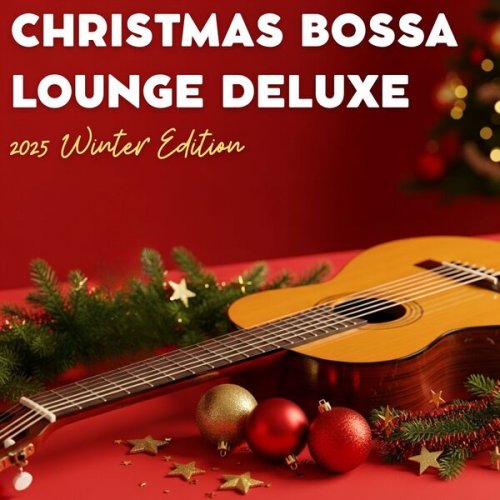

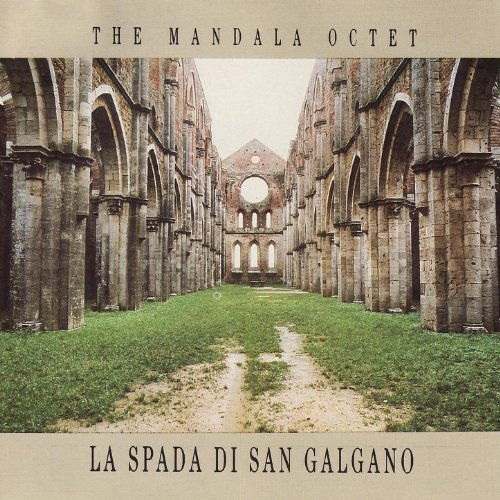
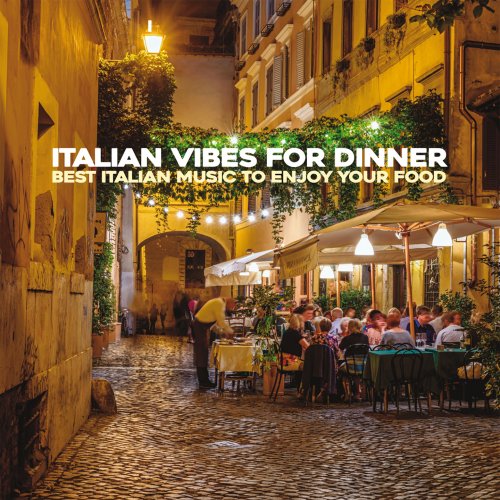
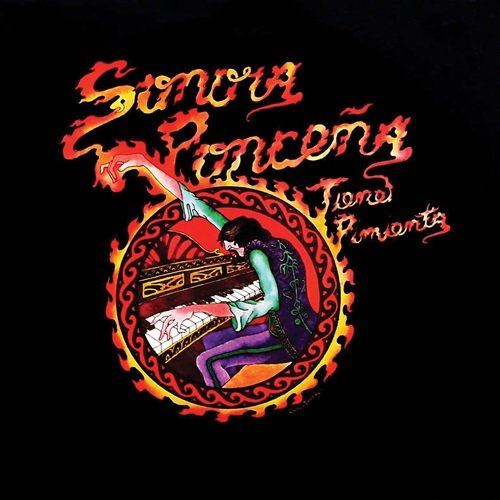
![Stephen McCraven - Wooley the Newt (2025) [Hi-Res] Stephen McCraven - Wooley the Newt (2025) [Hi-Res]](https://www.dibpic.com/uploads/posts/2025-12/1765906334_cover.jpg)
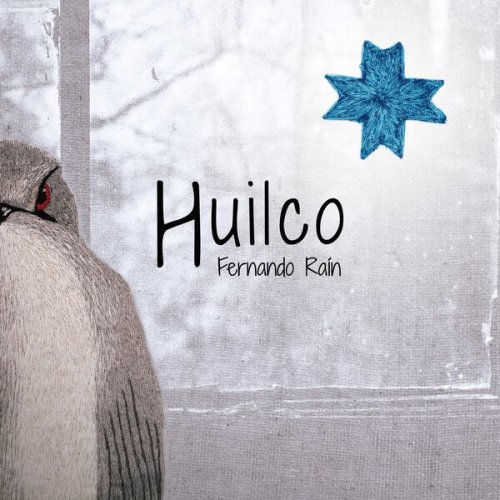
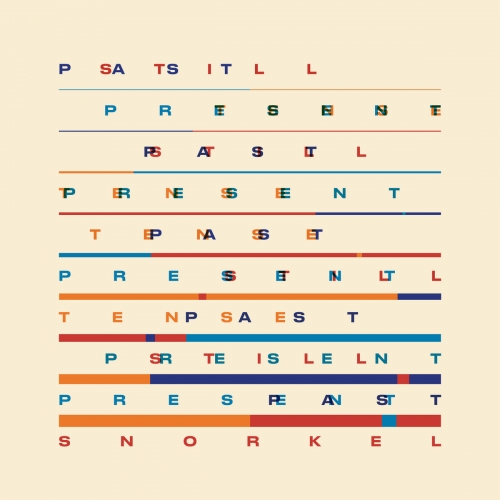
![Coco Chatru Quartet - Lost Christmas (2025) [Hi-Res] Coco Chatru Quartet - Lost Christmas (2025) [Hi-Res]](https://www.dibpic.com/uploads/posts/2025-12/1765719561_coco-chatru-quartet-lost-christmas-2025.jpg)